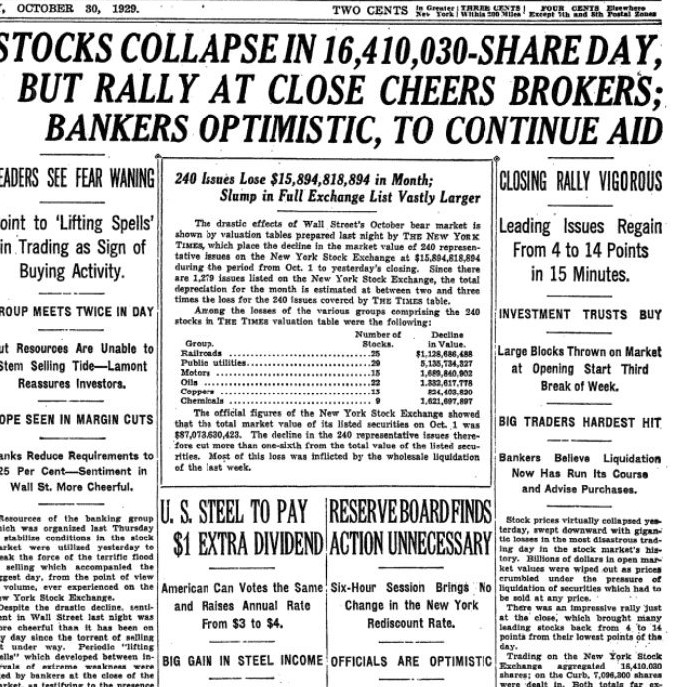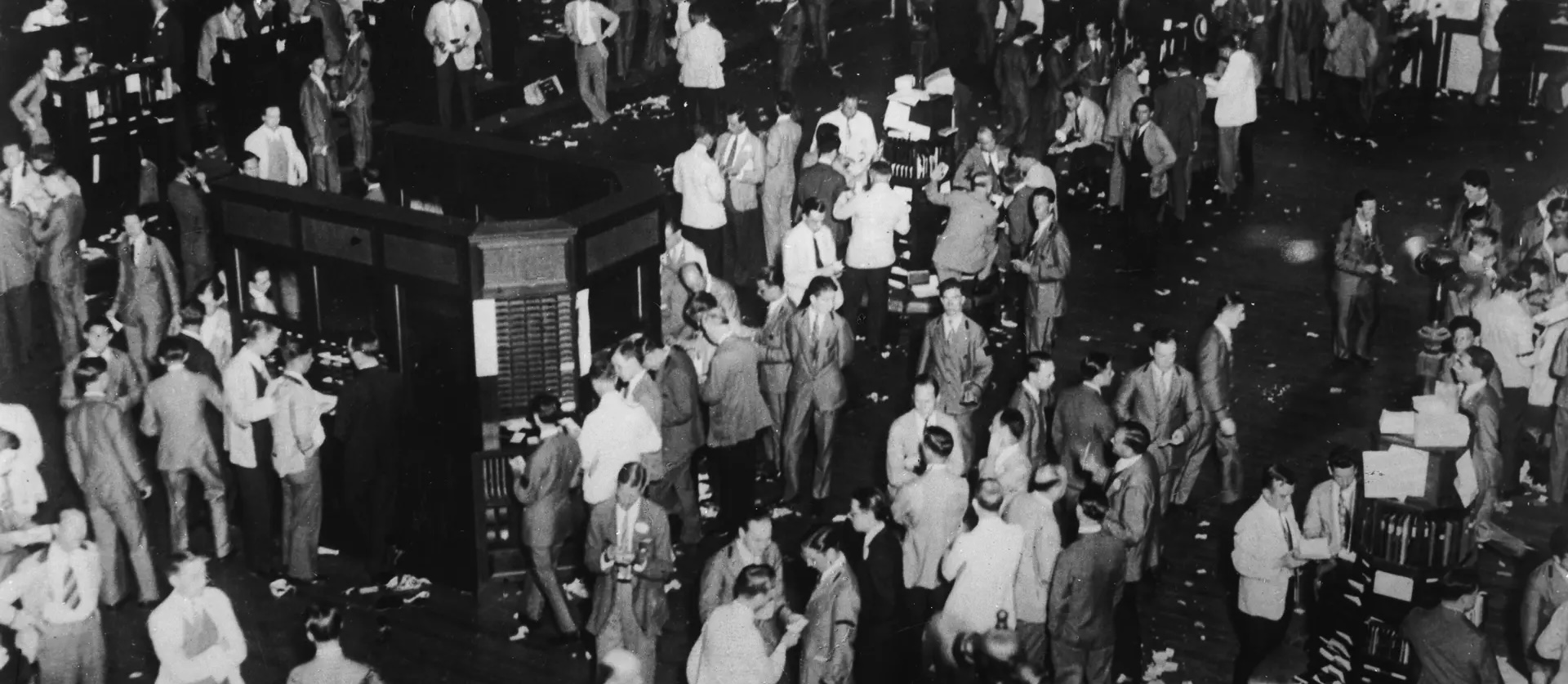
"Stocks Collapse in 16,410,030-Share Day, But Rally At Close Cheers Brokers; Bankers Optimistic, to Continue Aid." The New York Times, October 30, 1929

Thesis Statement
In New York, on October 24, 1929, during what is known as the Great Crash of 1929, stock market values declined abruptly, devastating the economy and paving the road for the Great Depression, the longest and most severe depression in history that would last for more than a decade. It changed how Americans viewed the economy and financial system for good. With the Great Crash and the Great Depression came a widespread realization that the government would need to intervene to put some regulations in place to prevent future catastrophes. Without such a catastrophic event for the American people, we may not have the improved financial regulation that we see in the United States today.

"Stocks Collapse in 16,410,030-Share Day, But Rally At Close Cheers Brokers; Bankers Optimistic, to Continue Aid." The New York Times, October 30, 1929
“The worst continued to worsen. What looked one day like the end proved on the next day to have been only the beginning. Nothing could have been more ingeniously designed to maximize the suffering, and also to insure that as few people as possible escape the common misfortune."
― John Kenneth Galbraith [1]
Header Image: ULLSTEIN BILD/GETTY IMAGES
[1] John Kenneth Galbraith, The Great Crash of 1929 (New York: Houghton Mifflin, 1954), pages 108 -109
"The Great Crash of 1929 and Financial Regulation"
Noemi Bloom
Junior Indivual Website
Total Multimedia Length: 0:00
Student Composd Word Count: 1192
Process Paper Word Count: 425